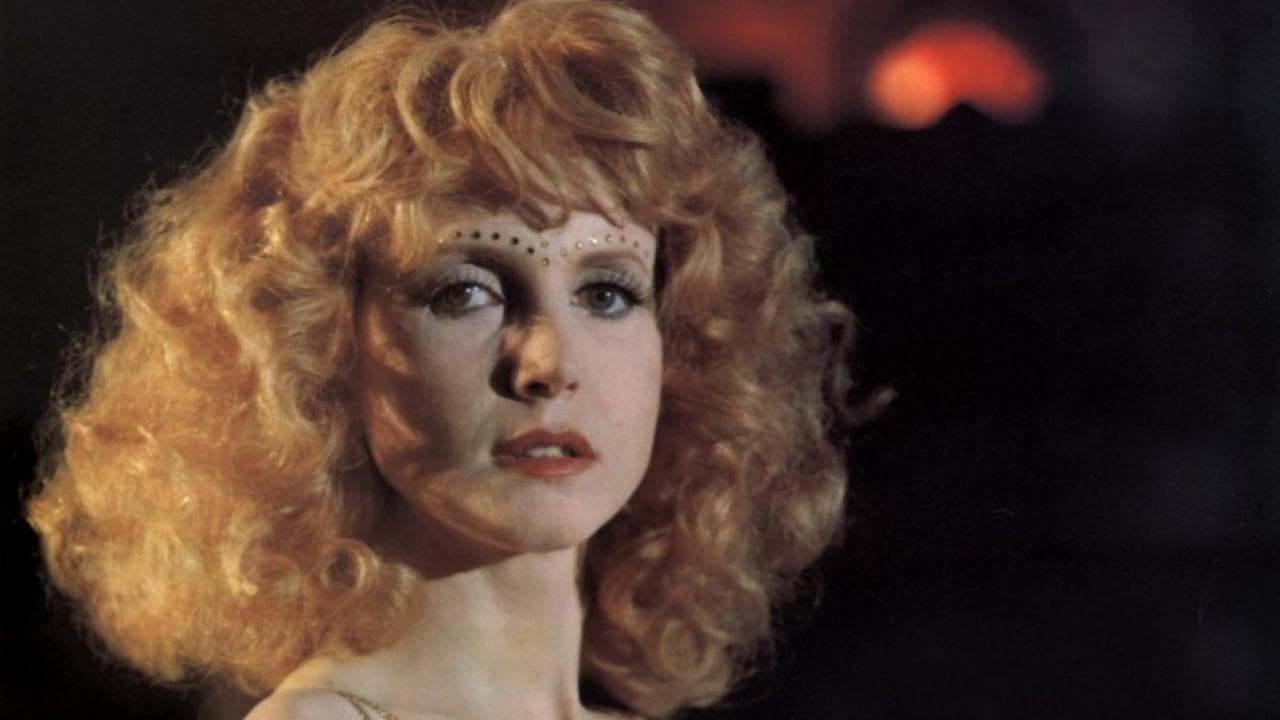

A different way of telling a story
... View MoreIn other words,this film is a surreal ride.
... View MoreA lot of perfectly good film show their cards early, establish a unique premise and let the audience explore a topic at a leisurely pace, without much in terms of surprise. this film is not one of those films.
... View MoreAfter playing with our expectations, this turns out to be a very different sort of film.
... View MoreThe Queen of the Night battles the Queen of the Sun over a magical diamond that will allow the winner to remain on Earth, specifically in modern day Paris.Marilù Parolini originally came from Italy, but moved to France where she got mixed up in the French New Wave movement. As part of that, she wrote this "experimental fantasy" with her husband, director Jacques Rivette. At this point, he had just finished "Celine and Julie Go Boating" (1974), which is among his best-known films today.Star Juliet Berto also came out of "Boating", though she is more generally associated with the work of Godard. Co-star Bulle Ogier is more often seen as a Rivette regular, though the two appeared in many of the same films. Ogier also has the distinction of being in Luis Bunuel's "Discreet Charm", which is widely loved by critics (though I was less than impressed).
... View MoreThere is a question whether this film is about opposites or contradictions. Neither. It is about sameness. For all the talk, Viva and Leni have the same goals, the same plan, the same path. Elsa/Jeanne are not a dichotomy of two personalities in one person, simply the same person whether in the dance hall or not, and her aspiration to the magical diamond is too much for her simple self. The protagonists are no better than the antagonists. Don't argue, it's true.Next question: Another reviewer asks: "What does it mean when Jean Babilee, outdoing Travolta, raises his arm and smashes a dancehall mirror through telekinesis?" Pierrot (the clown) is the foil, stronger than the females believe, or want to believe. Only progressives will be dumbfounded at the superiority of the male, or at least Rivette making this cinema assertion.Next question: The same reviewer asks: "Why does he wake up in the bottom of a parking garage and talk about killing a sister we've never seen?" Pierrot lives the life of simplicity, even Christ. It is not Viva who is the God figure, but Pierrot. The allusion to "sister" may be Satan. Why a female Satan? Again, this film holds up male superiority over female wiles. It is Pierrot who plays Viva and Leni from the start - he is never fooled, no matter how beautiful they are.Next question: The same reviewer asks, "Why does he become graceful and muscular, almost superhuman, when Bulle Ogier counts backwards and changes the universe to black-and-white?" If you haven't guessed, the male is superior. He is the most graceful, or full of Grace, if you like. There are many religious aspects here if one is open to it, obvious and overt.Next question: The same reviewer asks: "Why does Juliet Berto keep changing her costume?" Evil unmasked must always put on a new face. Today's fascist is tomorrow's "progressive" or "nationalist" (naturally, what I just said is up for further debate).Next question: The same reviewer asks: "How do you escape the dancehall?" A great question. The piano player, always rancorous, ever soothing, sets the tone for much of the dialogue. This indicates the backdrop of universal law (music) to which we all must dance or otherwise yell over. The dancehall is not really a prison, but a perceived prison. One may leave anytime, if one wishes. The actual question most people ask is not "How do I leave?" but rather "How do I change the music?" In other words, they like the fun but not the rules.I found this film to be a 1970's gem of low-budget quirkiness, whether this was deliberate from Rivette, of necessity due to funding, or by accident in post-production. The story is slight, not really complicated, good vs. evil, with a few nihilist elements that "None are good, no, not one." Nothing Tarantino or Peckinpah, not DeNiro evil, just female temptation, and not even in all its succubus delight.I recommend this film not as art but as basic entertainment, with cute leads (especially Bulle Ogier), slight lesbian overtones, meaningless dramatic interplay, and a cool surreal ending.
... View MoreRivette is relatively precise in his dealings with meaning. He is the most atavistically ceremonious of the Vague, in the sense that his abstraction as a journey leading inwards is always attended by signs and codas that affirm our passage. The transcendent rite of passage, in more ways than one, is about the symbolic enactment that paves the way. The transcendence itself is left to our sphere of experience, but we're at least brought to the doorstep.Oh, there's the improvisational flow that seems to throw people off, that things seem to be randomly bubbling up from nothing without significant plan or substance. The chance encounters in a world that we may recognize, the geography vaguely familiar whose nature is yet ultimately insoluble. There's a lot of that here. As in Celine, it is the breathing space that conducts our preparation to step beyond the mechanisms of reason. We don't reason with it, rather trust its intuitive flow. Like the dream world, it is only the figment of the known world spontaneously arisen as a stage or blank slate for the atavistic portents and divinations of the subconscious mind to be writ.But the rite of passage matters, in spite of the seemingly aimless wandering. Here it is about human effort to bypass the 'wall of paradise' constituted by the coincidence of apparent opposites (good and evil, light and dark, being and non-being). A barrier that obscures vision and traps in a world of names and forms that is only an apparent reality.Rendered in the film as twin goddesses of sun and moon, vying for a precious stone that enables their descend into the human world. The human characters are mere pawns to their schemes; to be seduced, tricked, threatened, or ultimately destroyed. Twin femme fatales, weaving spells in an inverse noir universe magnified into a macrocosmic struggle.The ill-prepared man who chances to steal a glimpse of them in their true form, like in the myth of Actaion who steals upon the Greek goddess Artemis bathing naked in a pool, has his consciousness shattered by the revelation. His mirrored image (the soul, the reflected half) is cracked.The woman who finally shatters the illusionary duality that quarantines human consciousness into meaningless dilemmas, does so by a sacrifice of blood.And this is the problem of the film. So much of it is a stridently symbolic enactment, a matter of ceremony. The sacrifice is, quite literally, a matter of spilling blood upon the symbolic stone and does not flow from anything - it is simply the schematic end of the spiritual myth. Although valuable as insight, the meaning of the film is trapped inside the rituals performed to signify it. Having cracked the outer shell to absorb it, the film seizes to resonate.
... View MoreThis is part one of what was to be Jacques Rivette's four-part project "Scenes de la Vie Parallelle". The idea was to create four different films with a running sub-plot involving a mythical war between goddesses of the Sun and the Moon, fighting for possession of a mysterious jewel. This one was a "film noir" modelled after "The Seventh Victim" (which Rivette screened for the cast before the shooting began) with bits of "Kiss Me Deadly", "Lady From Shanghai" and "Les Dames du Bois de Boulogne" thrown in for good measure. An uncanny mood piece it takes place in a weirdly unpopulated Paris. Jean Weiner (who used to play piano at "Le Bouef sur le Toit") supplies live piano improvisations here, much in the manner of an accompanist for a silent movie."Noroit" the second film in this series was a pirate adventure movie inspired by "Moonfleet" utilizing Tourneur's "The Revenger's Tragedy" as a frequently recited text --much in the way that Cocteau's "The Knights of the Roundtable" is quoted here.After these two Rivette began "Marie et Julien" with Albert Finney and Leslie Caron, but suffered a nervous breakdown three days into shooting. This brought the project to an end. This year (2003) however, he's gone back to "Marie et Julien" again with Emmanuelle Beart and Jerzy Radzilowitz. Maybe the four-part project will be compeleted after all.
... View More